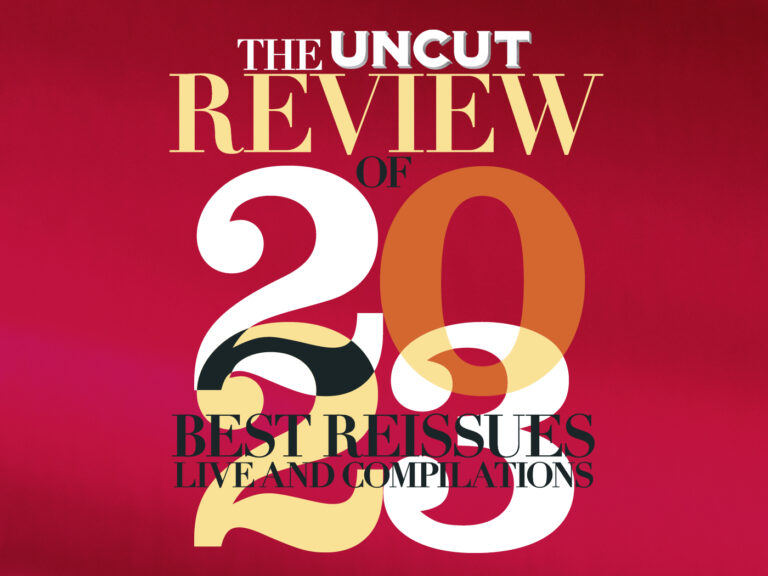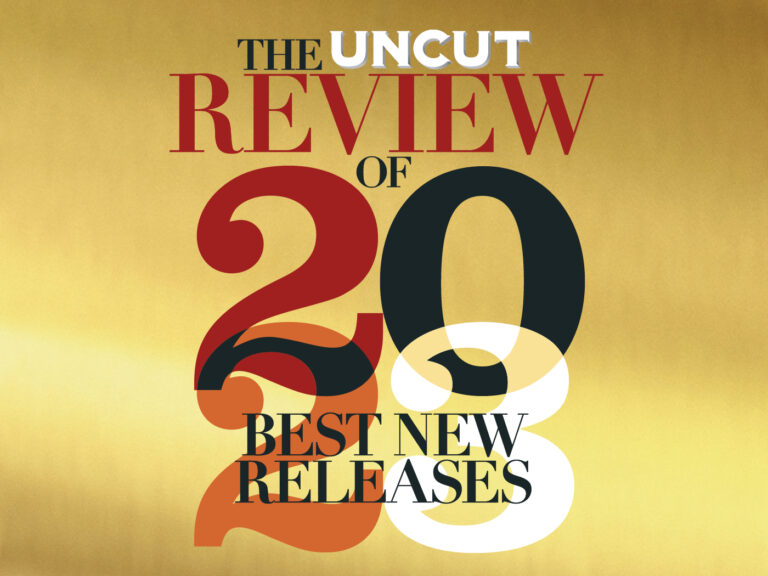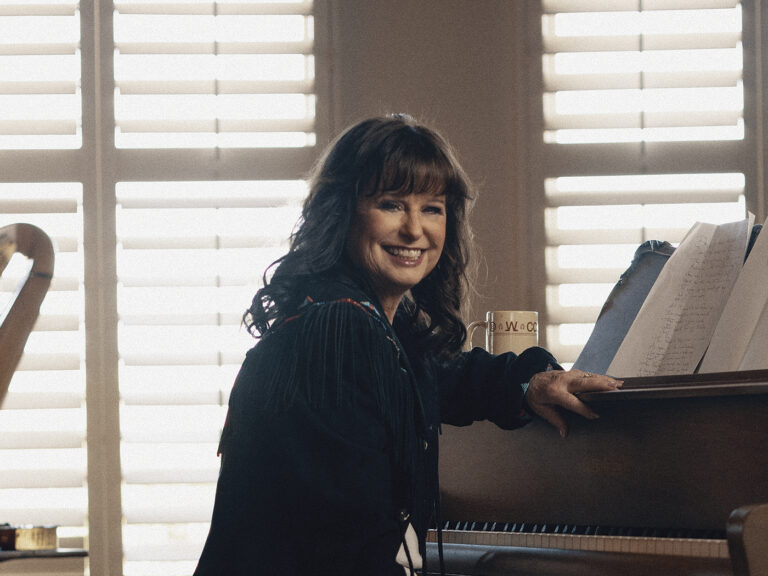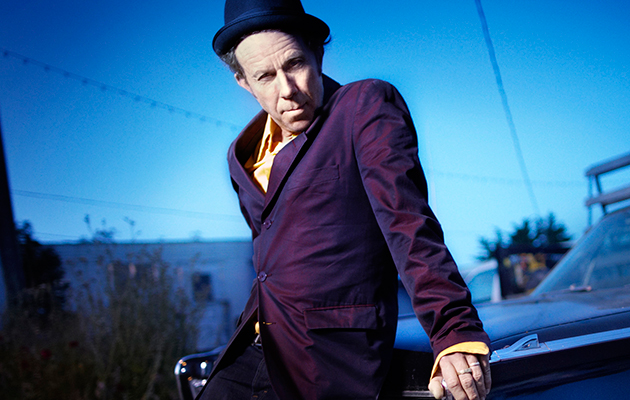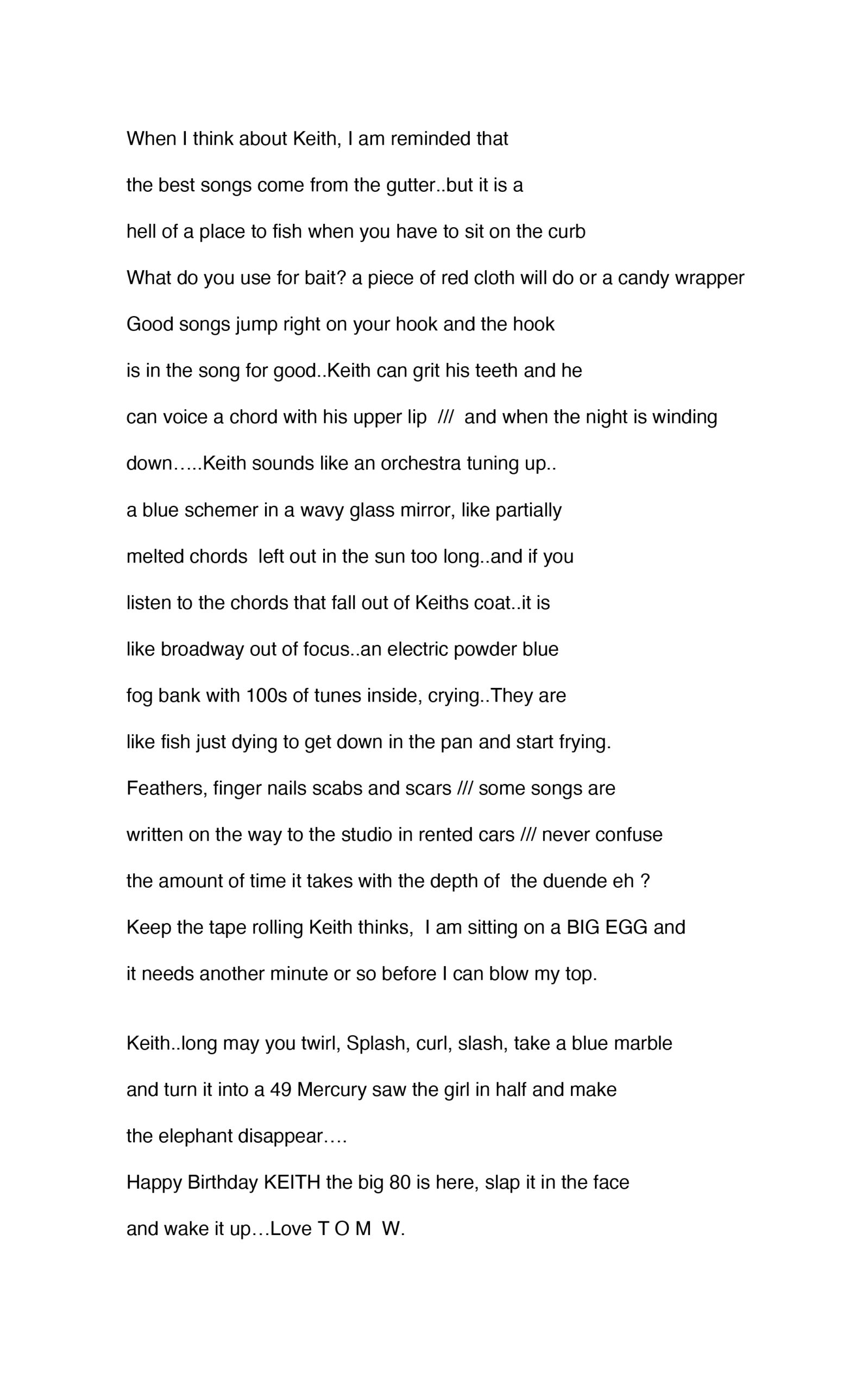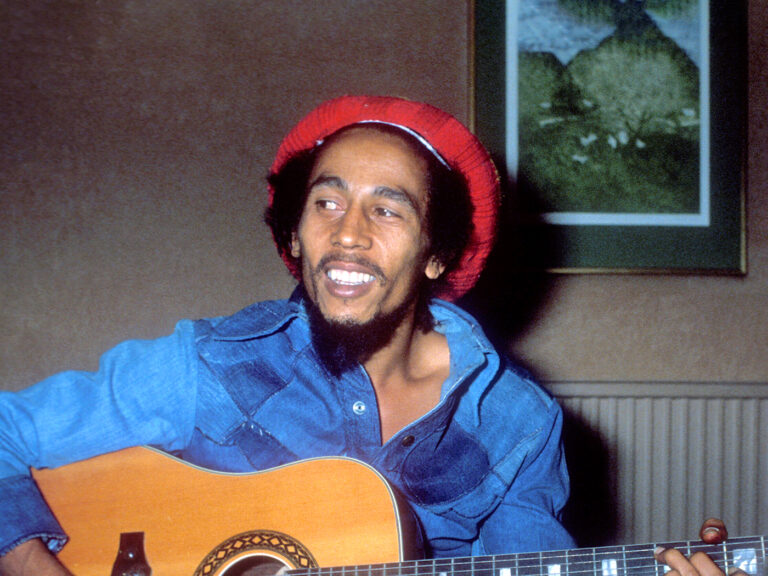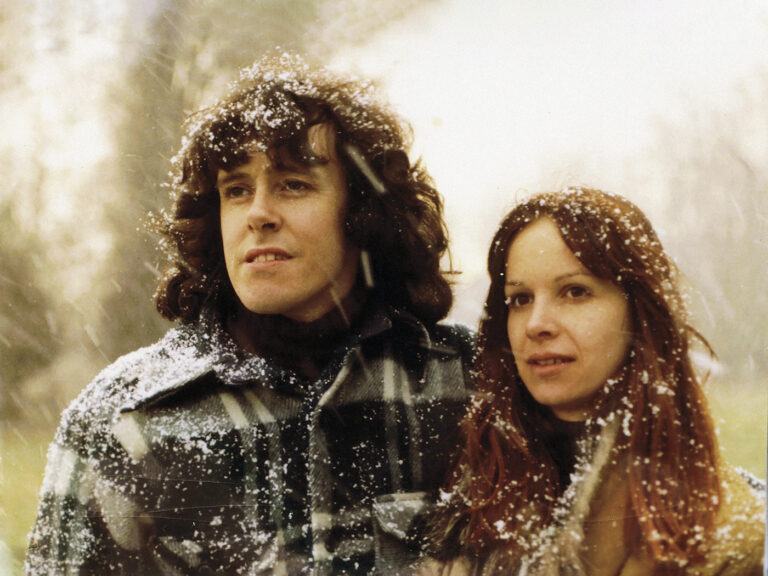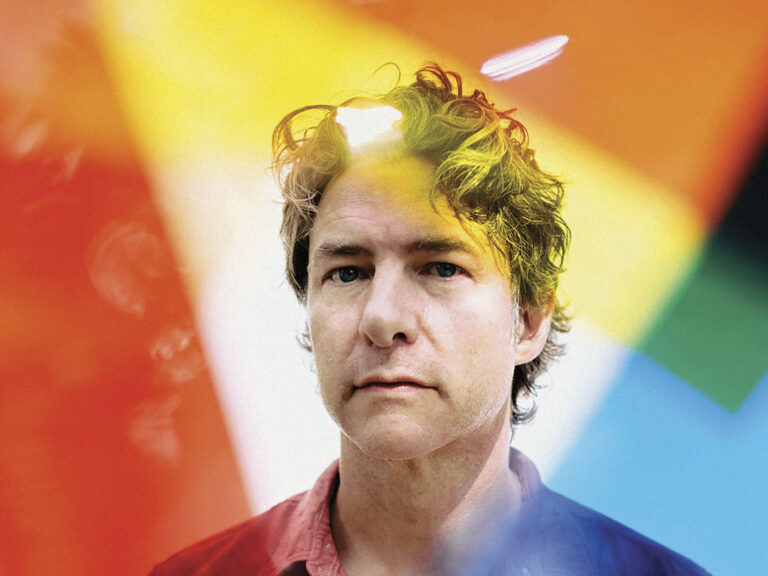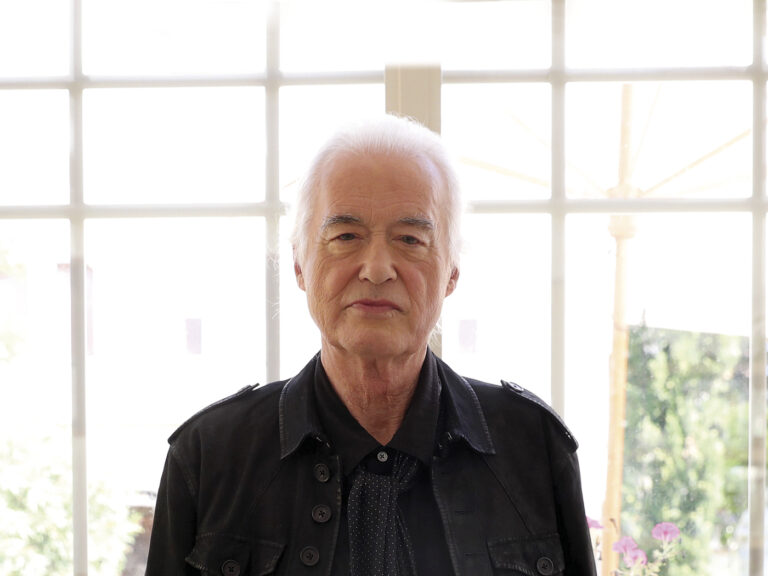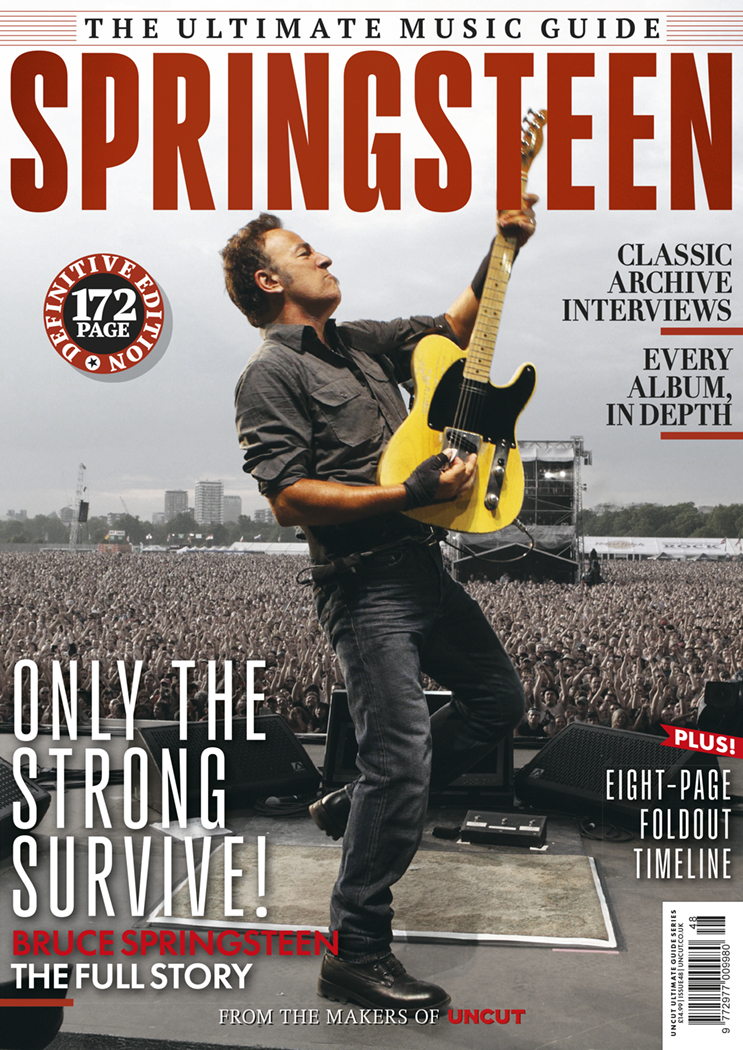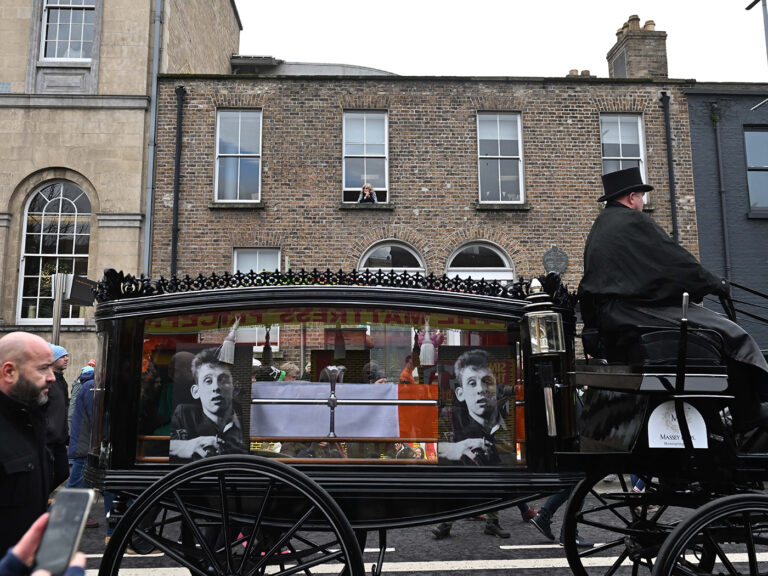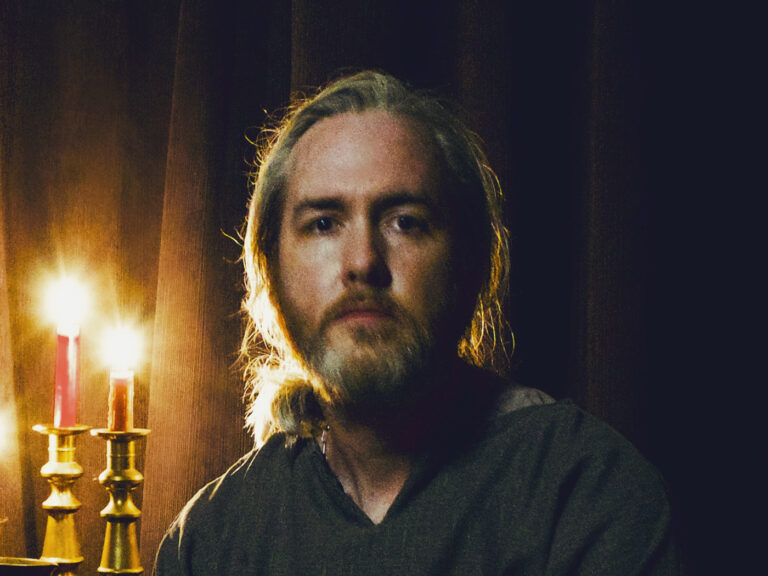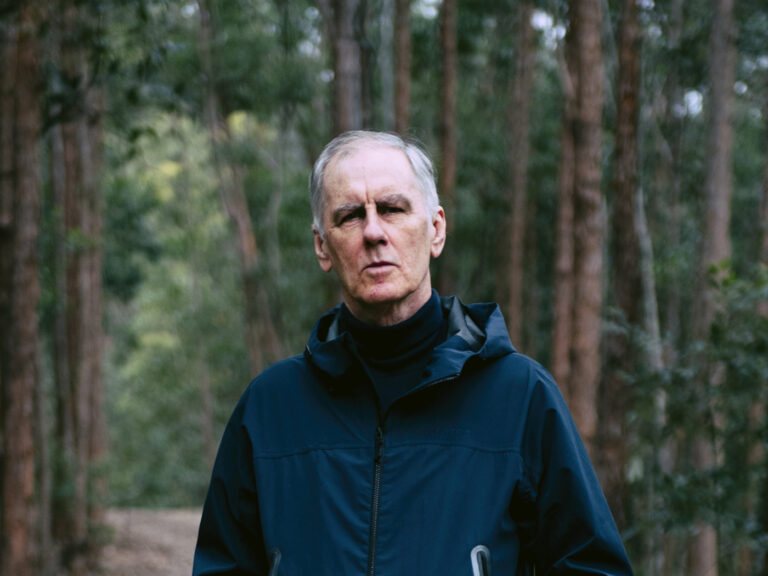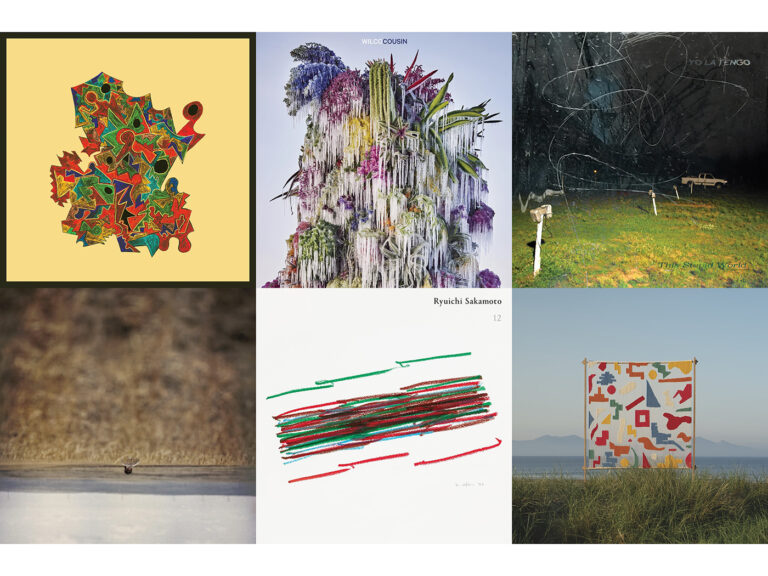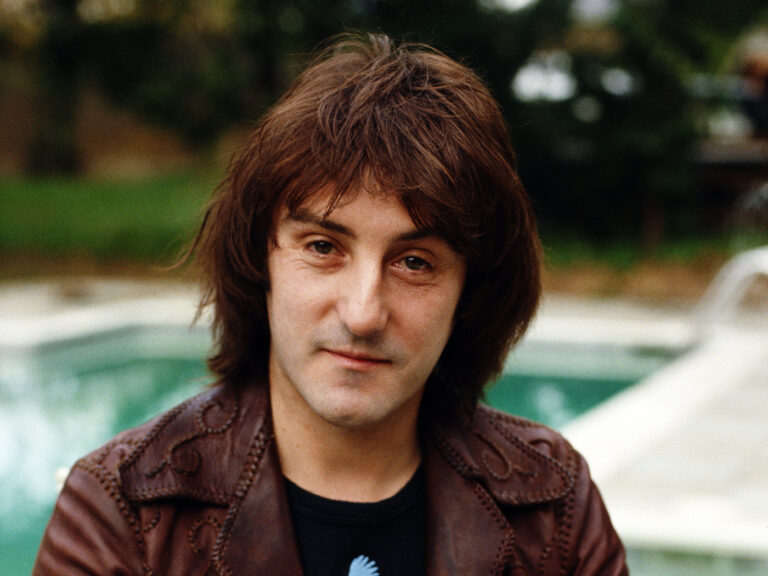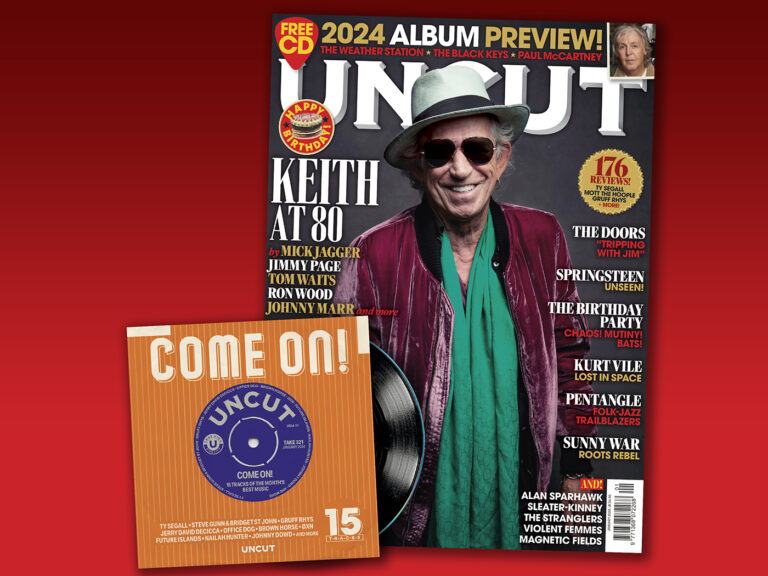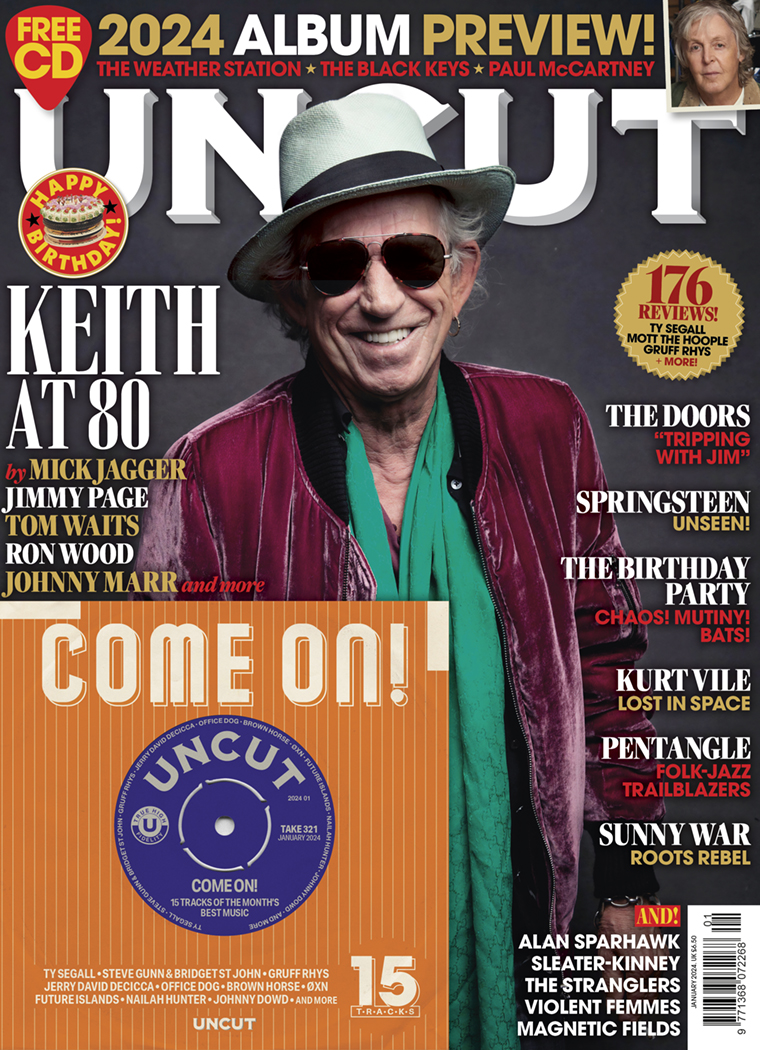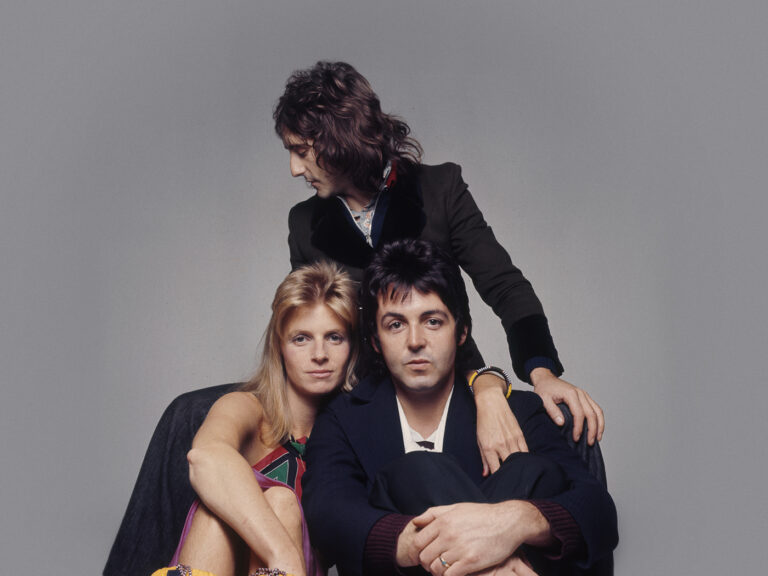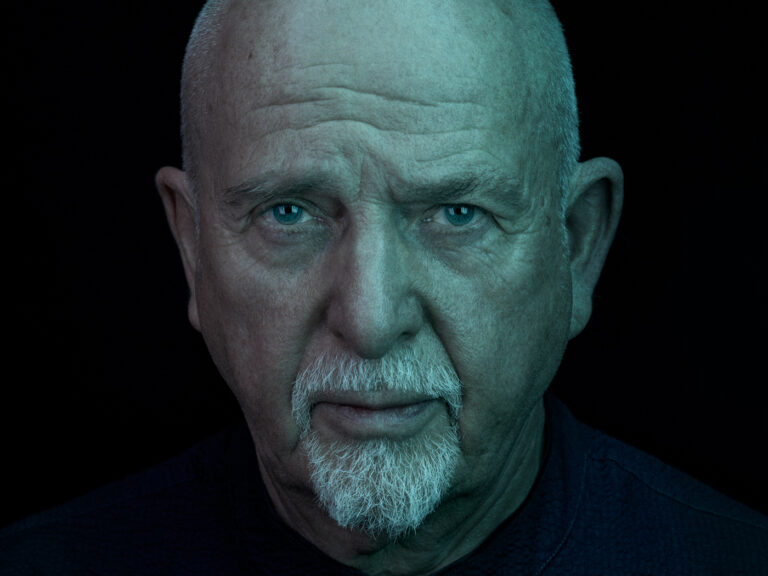KEITH RICHARDS IS ON THE COVER OF THE NEW UNCUT – HAVE A COPY SENT STRAIGHT TO YOUR HOME
30 IBRAHIM HESNAWI
The Father Of Libyan Reggae
HABIBI FUNK
Arab world reissue specialists Habibi Funk rarely fail to deliver something fresh and unexpected: Sudanese jazz, Egyptian disco, Lebanese Tropicália… and now Libyan reggae, courtesy of Tripoli’s Ibrahim Hesnawi. With Bob Marley as his guiding star, Hesnawi’s approach turned out to be rootsy and direct, distinguished from the Jamaican style by elegant Arabic melodies and buzzing heat-haze organs.
29 MYRIAM GENDRON
Not So Deep As A Well
BASIN ROCK
This captivating debut has only grown in stature since it was first released in 2014. Recorded and mixed in Gendron’s bedroom, it found the French-Canadian musician and songwriter transfiguring the poems of Dorothy Parker into skeletal chamber-folk songs. At times it felt like a long-lost private press album from the 1960s, which only added to its magical allure.
28 ALBERT AYLER QUINTET
Lost Performances 1966 Revisited
EZZ-THETICS
Recorded live on tour in northern Europe, these performances captured the great free-jazz saxophonist and his ferocious five-piece band – Don Ayler on trumpet, Michel Samson on violin, William Folwell on double bass and Beaver Harris on drums – at a transcendent peak. Rich in sonic textures, with Ayler directing his group’s improvisations and lifting the melodies to wild, abstract heights.
27 LES RALLIZES DÉNUDÉS
Citta ’93
TEMPORAL DRIFT
Until recently, the discography of the mysterious Les Rallizes Dénudés – Japan’s answer to The Velvet Underground – consisted largely of bootlegs, grainy YouTube uploads and excitable Julian Cope screeds. But this official document of a 1993 reunion show in Kawasaki is another important piece of their puzzle. So punishing in places that attendees apparently had to run for the exits, there are also moments of surprising tenderness.
26 SPARKLEHORSE
Bird Machine
ANTI-
When Mark Linkous died of a self-inflicted gunshot wound on March 6, 2010, in Knoxville, Tennessee, he left his final work incomplete. Thirteen years later, his brother Matt and his sister-in-law Melissa – along with Linkous’s closest collaborators – completed the album. Highlighting the contrasts and emotional depth that best illustrate Linkous’s restless creative spirit, the work handsomely honoured his memory.
25 TOM WAITS
Rain Dogs
ISLAND/UME
In 1982, while his peers were acquainting themselves with Fairlights and gated drums, Tom Waits was banging on pipes and dragging metal chairs across the floor. The result was his legendary junkyard trilogy, newly remastered to magnify every clatter and scrape. Rain Dogs is the all-time classic, but the picaresque Swordfishtrombones and more reflective Frank’s Wild Years are almost as essential.
24 SONIC YOUTH
Live In Brooklyn 2011
SILVER CURRENT
There are no shortage of Sonic Youth live documents out there, but this may be the most vital, memorialising what turned out to be the band’s last ever US show. On an outdoor stage by the banks of New York’s East River, switching seamlessly between generational anthems and cherished deep cuts, Sonic Youth put the seal on a singular, transformative career.
23 HAWKWIND
Space Ritual: 50th Anniversary Edition
ATOMHENGE
Hawkwind have always been a feeling, a spectacle, a subculture unto themselves, best experienced live. Thus 1973’s Space Ritual, recorded over two heady nights in Liverpool and Brixton, is their crowning glory. An 11-disc deluxe edition gave you both concerts in full, plus a bonus Sunderland show, 5.1 mix and reproduction tour programme.
22 NEW ORDER
Substance
WARNERS
Yes, it’s just a best-of album. But it’s one of the greatest best-of albums ever compiled, featuring toughened-up takes on “Temptation” and “Confusion” that are superior to the original singles, as well as killer B-sides like “Lonesome Tonight” and “1963”. The 4CD version of this newly remastered edition also included a great 1987 live set, introduced by Tony Wilson, where New Order played Substance in sequence.
21 LARAAJI
Segue To Infinity
NUMERO GROUP
The definitive collection of Edward Larry Gordon’s earliest works as an ambient pioneer, Segue To Infinity augmented 1978’s Celestial Vibration with a trove of previously unheard recordings onto a four-disc motherlode of zithery bliss. Rapturous New Age innovations and expansive kalimba odysseys prevailed, creating three hours of meditative mindfulness, reinforcing Laraaji’s unwavering faith in the healing power of music.
20 GAL COSTA
India
MR BONGO
Another highpoint of Mr Bongo’s Brazilian reissue series, from the queen of the Tropicália scene. If the unashamed sensuality of the cover photo was a fairly direct provocation to Brazil’s ’70s ruling military junta, there was also a more subtle subversion at work. Costa’s exuberant, lusciously orchestrated takes on folk and bossa nova standards – as well as songs by her friend Caetano Veloso – suggested music itself was an inherent form of resistance and liberation.
19 ACETONE
I’m Still Waiting
NEW WEST
With the original LPs now going for silly money on Discogs, this boxset was long-overdue validation for one of the great lost bands of the 1990s. Including heartfelt liner notes from fellow traveller Jason Pierce, it tracked their journey from luminous indie-rockers, via a pivotal mini-album of country covers, to the resplendent slow-motion soul of 2000’s York Blvd. Such a tragedy that their journey had to end there.
18 THE BREEDERS
Last Splash: 30th Anniversary Original Analog Edition
4AD
“You’ve loved me before/Do you love me now?” Yep, still smitten. The acme of ’90s alt.rock sounded especially sharp and thrilling on this top-spec, half-speed vinyl remaster. Adding to the fun was the newly unearthed “Go Man Go” – originally intended for the Pixies – and a version of “Divine Hammer” drawled with catatonic charm by J Mascis.
17 ABC
The Lexicon Of Love
UNIVERSAL
One of New Pop’s highlights, the delayed 40th-anniversary edition of ABC’s 1982 debut still sparkles. Much of the enduring appeal lies with the gold lamé melodies and Trevor Horn’s sumptuously orchestrated production, but Martin Fry’s high-concept wordplay dominates. This box brought lots of extras – such as the obligatorySteven Wilson mixes – but the original is hard to top.
16 JOHN COLTRANE WITH ERIC DOLPHY
Evenings At The Village Gate
IMPULSE!
It felt like the miraculous discovery in 2018 of great lost Coltrane album Both Directions At Once was unlikely to be repeated. But don’t underestimate those diligent archivists. This 1961 set was another amazing find, capturing Trane’s short-lived quintet with Eric Dolphy – who dazzles on flute during a revelatory take on “My Favorite Things” – not to mention the only known live version of the epic “Africa”.
15 THE DREAM SYNDICATE
History Kinda Pales When It And You Are Aligned
FIRE
The Paisley Underground band have reissued their debut The Days Of Wine And Roses twice before, in 2001 and 2015. But this 40th-anniversary edition expanded to document the whole lifespan of their inaugural lineup, from the first rehearsal through the sessions for …Wine And Roses to a 1982 show in Tucson. Peerless.
14 THE VELVET UNDERGROUND
Loaded (Fully Re-Loaded Edition)
COTILLION/ATLANTIC/RHINO
This definitive survey of joyous, late-period, Doug Yule-fuelled Velvets made its first appearance on vinyl this year, along with a handful of bonus reproduction seven-inches. The discs of demos and outtakes yielded an abundance of riches – particularly fun are the scratchy loft party versions of “Satellite Of Love” and “Love Makes You Feel Ten Feet Tall”.
13 THE REPLACEMENTS
Tim (Let It Bleed Edition)
RHINO
A revelatory release for ’Mats fans, where Ed Stasium’s new mix rectified many of the more notorious aspects of Tommy Erdelyi’s original, transforming the band’s 1985 major-label debut in the process. Expertly curated, this four-disc box also included alternate versions and a live disc – as well as instructive sessions recorded with Alex Chilton. The Stasium mix was worth the price of admission alone.
12 THE TEARDROP EXPLODES
Culture Bunker 1978–1982
UNIVERSAL
Compiled by the band’s press officer – and former Uncut writer – Mick Houghton, this gargantuan 6CD/7LP set offered a deep dive to satisfy even the most ardent archaeologist (Julian Cope, for example). Not bad going for a band whose original output only extended to two studio albums – but as Culture Bunker demonstrated, this was a dynamic operation, moving fast in many interesting directions. Tune in!
11 VARIOUS ARTISTS
Soul’d Out: The Complete Wattstax Collection
STAX/CRAFT RECORDINGS
A real-time document of Stax’s legendary 1972 all-dayer in LA, this 12CD set not only emphasised the cultural significance of the label during its imperial phase, it also placed the listener right in the Memorial Coliseum. Where better to enjoy everyone from the Staple Singers to The Bar-Kays and, in a fully restored set, Isaac Hayes – then not just the biggest act on the label but one of the biggest stars in the world?
10 BOB DYLAN
Shadow Kingdom
COLUMBIA/LEGACY RECORDINGS
Ostensibly the soundtrack to Dylan’s 50-minute show streamed in July 2021, Shadow Kingdom came with its own predictably mischievous provenance. The musicians who mimed along with the singer were not those who had played on the tracks. But such sleight of hand aside, Dylan breathed fresh life into these “early songs”, from the unbearably tender “Queen Jane Approximately” to the pounding rockabilly stomp of “I’ll Be Your Baby Tonight”.
9 DE LA SOUL
3 Feet High And Rising
AOI/CHRYSALIS
It was a bittersweet feeling, having De La Soul’s catalogue available again after decades in label limbo – shout-out to the sample clearance guys – while simultaneously mourning the death of co-founder Dave ‘Trugoy’ Jolicoeur. Still, the albums stand as a fantastic tribute to his
and their inventiveness, deft rhyming and sheer joie de vivre. And not just the game-changing debut, but the underrated follow-ups De La Soul Is Dead and Buhloone Mindstate too.
8 CARDIACS
A Little Man And A House And The Whole World Window
ALPHABET BUSINESS CONCERN
Still sounding arrestingly weird and gloriously wonky 35 years on, Cardiacs’ debut remains an attention-grabbing explosion of crazy-paving mania, avant-punk surrealism and wildly promiscuous stylistic overload. Three additional discs featured radio and studio sessions plus a 1987 live show, although it’s the main album which captured visionary frontman Tim Smith’s flair for discordant extremes and accessible melody.
7 AR KANE
AR Kive
ROCKET GIRL
The brilliant and enigmatic British duo AR Kane – pioneers of both dream-pop and trip-hop – finally got their dues this year with a lavish boxset compiling their first two albums, 1988’s 69 and 1989’s i, plus the transitional “Up Home” EP. Strange, sensual, political and sometimes even danceable (“A Love From Outer Space” gave its name to an eclectic club night that’s still packing them in), AR Kane’s unique blend remains intoxicating.
6 DRIVE-BY TRUCKERS
The Complete Dirty South
NEW WEST
The Drive-By Truckers envisioned their fifth album as something expansive and novelistic: a double LP of heavy Southern rock about moonshiners, redneck sheriffs, smalltown criminals and doomed rockers. Nearly 20 years after reluctantly editing The Dirty South down to a single disc, the band made good on their original vision by remastering and resequencing it, which not only enlarged that Southern landscape but added new colours and consequences.
5 BOB DYLAN
The Bootleg Series Vol 17: Fragments – Time Out Of Mind Sessions (1996–1997)
COLUMBIA/LEGACY RECORDINGS
The volume many had been longing for: a deep dive into the haunting 1997 masterpiece that kickstarted Dylan’s late-career hot streak. Unheard takes from the vaults revealed the radical changes songs went through during the semi-organised chaos of the sessions as Dylan and producer Daniel Lanois’ visions clashed and merged. Controversially, the set also featured a new mix of this beloved album which pointedly altered its character from Lanois’ original swamp-mist sound.
4 JONI MITCHELL
Archives Volume 3: The Asylum Years (1972–1975)
RHINO
This glorious collection of outtakes, demos and live tracks explored Mitchell’s continued musical and emotional journey as she moved, following the success of Blue, increasingly towards jazz. What to add to For The Roses, Court And Spark and The Hissing Of Summer Lawns? How about versions of “You Turn Me On I’m A Radio” and “Raised On Robbery” with Neil Young & The Stray Gators for starters?
3 ARTHUR RUSSELL
Picture Of Bunny Rabbit
AUDIKA/ROUGH TRADE
Another stunning addition to the most impressive posthumous discography in music. These tracks were recorded around the same time as Russell’s now-beloved 1986 cello’n’FX album World Of Echo, occupying the same dreamy, liminal space. Key finds were the woozy tape collage of the title track and a drum-less deconstruction of his psychedelic disco tune “In The Light Of The Miracle”.
2 NEIL YOUNG
Chrome Dreams
REPRISE
A typically busy year for Young, including his first live shows since 2019, a two night stand at LA’s Roxy with a reborn Santa Monica Flyers while a redux Ragged Glory offered rare Crazy Horse jams. Meanwhile, the release of this mythic ‘lost’ album from 1977 captured both sides of Young’s sonic spectrum, from the fragile fire-crackle of “Will To Love” to the fuzz-stomp of “Sedan Delivery”. Surely, now it’s time for Archives 3…?
1 PHAROAH SANDERS
Pharoah
LUAKA BOP
From CBGB to The Loft, from Madison Square Garden to the Bronx block parties, New York in 1976 was the place to be. Unless you happened to play jazz. With his label Impulse! ceasing to issue new music and most of his peers turning to jazz-funk or fusion, Pharoah Sanders found himself out on a limb, making an album for the tiny India Navigation label at their makeshift studio in Nyack, 30 miles north of NYC. His band at this point included several recording virgins, including his wife Bedria on Indian harmonium. Sanders himself was apparently unmoved by the results and the self-titled album faded into obscurity.
But it’s funny how times change. These days, Pharoah is regarded as perhaps the ultimate Pharoah Sanders album, the purest distillation of his singular spiritual quest. Recent years have seen a spate of dodgy bootlegs to cash in on demand for the scarce original LP. There’s even been fierce debate as to which is the best-quality YouTube rip. So Luaka Bop’s official reissue of the album, remastered with care as per Sanders’ wishes, has been something of a godsend.
For everyone who swooned over 2021’s Floating Points collaboration Promises, here was Sanders tracing similarly sublime melodies in the mid-’70s margins, with the combination of Clifton ‘Jiggs’ Chase’s shimmering organ and Tisziji Munoz’s circular guitar motifs giving it all a serene, rippling quality. But Pharoah is also ecstatic and celebratory: witness Sanders’ untutored soul vocals on “Love Will Find A Way” or the wordless hosannas of “Memories Of Edith Johnson”, gleefully sampled by Four Tet. The ‘spiritual’ element of this spiritual jazz touchstone is not at all solemn or ceremonial, and “Harvest Time” actually swings pretty hard – particularly on the two bonus live versions of the track included in the LP boxset, recorded in Europe in 1977 with an entirely reconfigured band. Great music will find a way.


